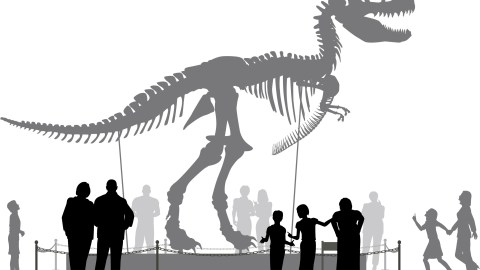What We Can Learn From Mass Extinctions

Since “no problem can be solved from the level of thinking that created it,” let’s look at our ecological crisis from the only angle that will help us solve it: not as an invasive species separate from the rest of the biosphere and “killing the planet,” but as something the Earth is doing, part of the story of life, participants in the distributed intelligence of the evolutionary process and thus performing a valuable function we cannot fully understand. This is the sixth mass extinction, so let’s look at how we (identifying with life as a whole, since we have never been completely removed from the layer of life that covers this planet) made it through a comparable crisis before:
Three and a half billion years ago, we had our first industrial revolution – the evolution of photosynthesis – and learned to convert sunlight into sugar. Like any Great Progress, it produced complex second-order consequences. By 2.5 billion years ago we had flooded the atmosphere with oxygen – a flammable and corrosive gas that was toxic to all life at the time. Some of us hid underground to escape the polluted skies; but some of us evolved a new metabolism, which used oxygen as a fuel source and powers our cells with tiny fires.
We revere the mutual respiration of animals and plants and speak of the sacred balance of nature. Maybe it’s truer and more useful to marvel at how we very nearly destroyed ourselves after discovering an unstable new energy source, then figured our way out of it – by coming up with a complementary metabolism that supported an even more diverse, dynamic, and intelligent ecosystem. We did it before; we can do it again.
(In one of nature’s great reversals, solar power caused the first ecological catastrophe, and internal combustion saved us from the brink of extinction…whereas today, it seems to be the other way around. We see this played out again and again in the cycle of forest fires, as carbon and other nutrients are stored in wood and then released back to the soil and atmosphere, nourishing a new cycle of life.)
So as scary as it is to think about the plastic islands in the Pacific Gyre, the rainforests turned to pasture, and the plumes of industrial exhaust, “life finds a way” and the collective intelligence of our species is a tissue in the body of the Gaian superorganism that is specialized for finding new solutions. Every time we paint ourselves into a corner with pollution, we find a way to turn that trash into energy – and so cradle-to-cradle manufacturing, a modern food web of complementary consumption, will become the new norm as “market forces” (a.k.a. the will to survive) pressures us to evolve new metabolic systems in partnership with both organic and digital life – a vaster, richer, smarter ecology in which nothing is wasted.
The solutions are many, from bottle bricks to bioremediation, aquaponics to time banks. Recycling is profitable and the history of life yields an inexhaustible wealth of good ideas. One of the best is that all pollution is a potential resource…and collapses come and go, leaving us wiser in their wake.
Paleontologist turned performance philosopher, Michael Garfield‘s ecodelic explorations map the evolutionary landscape and our place in it through improvised acoustic guitar electronica, live painting, and techgnostic evangelism for planetary culture. Follow him on twitter @michaelgarfield.




